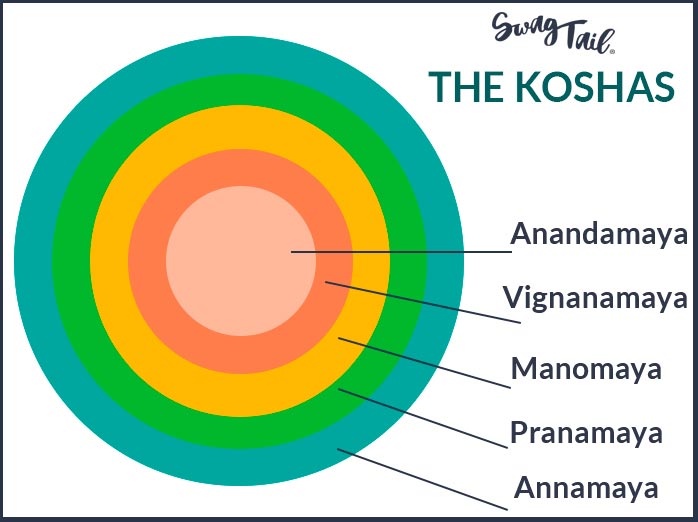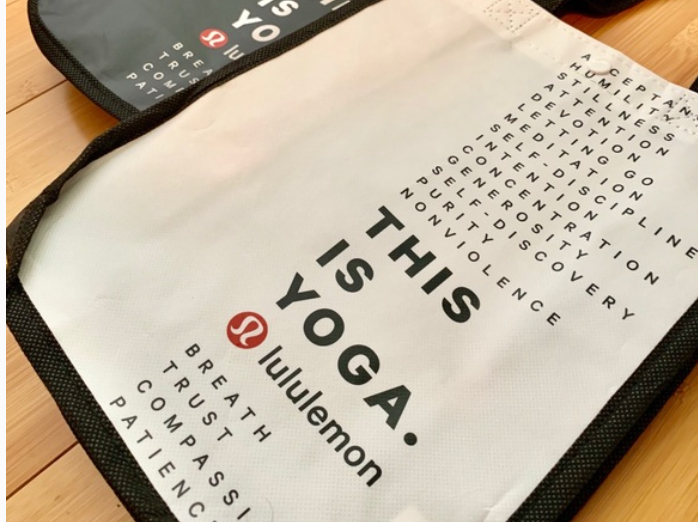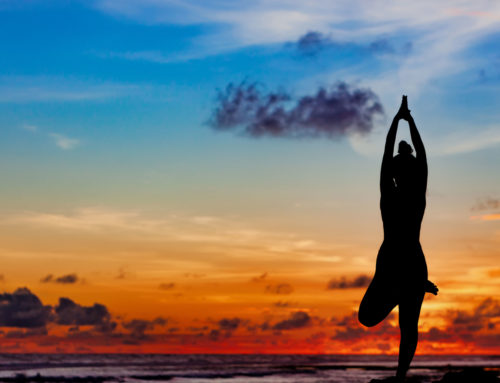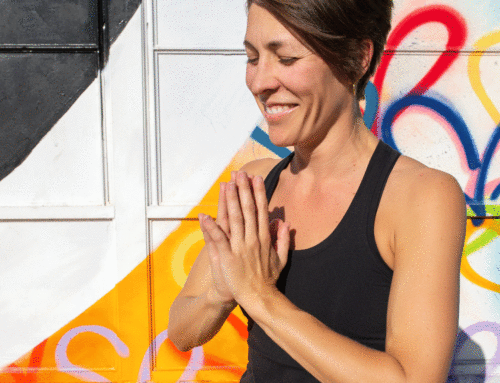 Yoga is a practice that connects one to their true, spiritual nature. You use asana, pranayama and meditation as the means to increase inner joy and personal freedom. Through such techniques, you tap into your power. And the best part is, these positive aspects at the core of each human being can manifest through individualized action. In light of the recent social turmoil, this blog serves as a reminder of what yoga is and how it can be used to enhance the lives of all.
Yoga is a practice that connects one to their true, spiritual nature. You use asana, pranayama and meditation as the means to increase inner joy and personal freedom. Through such techniques, you tap into your power. And the best part is, these positive aspects at the core of each human being can manifest through individualized action. In light of the recent social turmoil, this blog serves as a reminder of what yoga is and how it can be used to enhance the lives of all.
In fact, this article is inspired by the expressed concerns of those in the Swagtail community regarding recent global events.
The COVID-19 pandemic and protests of last week highlight the importance of Svadyaya. Now is a time to listen, to read, and to question. It’s caused me to sit back and reflect on the question:
“What is yoga?”
So, today I share my perspective about yoga with you. My goal is that this article validates the important work you do as a yoga professional, and I hope it gives you more insight about the purpose of the Swagtail blog as a whole.
Photo Credit: Diane Nicole Photography
WHAT IS YOGA?
Yoga means yoke, or union, and it refers to the coupling of body, mind, and spirit. This is a journey of awakening to the true self. It’s a process of discovering your spiritual nature and what you are capable of experiencing and creating in this human body.
As T.K.V. Desikachar once said, “The practice of yoga is intended to make someone wiser, more able to understand things than they were before. … the goal is always Bhakti, or to put in my father’s words, to approach the highest intelligence, namely, God.”
How do you achieve such freedom and wisdom?
The most common path is through the 8 Limbs of Yoga. Patanjali outlined guidelines for social conduct, personal behaviors, and physical movements that lead to Samadhi. And this experience of enlightenment is oneness with All-That-Is.
As you practice yoga and unite the body, mind, and spirit, you walk a higher path. You gain an inner sense of calm and confidence. And you live more vibrantly, breathe more deeply, and connect with others in a more meaningful way.
THE KOSHAS
The koshas are another representation of your multi-faceted self. The outer layers are the most superficial, while the inner layers the most subtle.
 The Annamaya Kosha
The Annamaya Kosha
The Annamaya Kosha is the cellular body. It’s your digestive capabilities, sexual orientation, and skin color. These are the surface elements of your being that allow you to function in daily life. Much of the social conversation lately—whether it be racially-driven or health-motivated—is focused on the Annamaya Kosha. The focus is on differences between people. When you don’t understand someone or something, it’s easy for fear to enter the equation. Fear disconnects you from your true self and limits your access to the more subtle aspects of yourself.
The Pranamaya Kosha
This kosha is your pranic body. This is the air you breathe and how you consciously move the prana (or life-force) throughout your being to enhance your physical vitality. At this layer, it’s your first invitation to work with something unseen by the naked eye. You can’t see the breath moving in and out of the body. Instead, you only see the effects of it—the rib cage expands and contracts, the nostrils flare, your mind gets calm. This is also a powerful step on the yoga path of identifying yourself as a spiritual, non-material being.
The Manomaya Kosha
The Manomaya Kosha is more subtle still, and refers to your mental functioning or mindset. It also encompasses your nervous system. When you use mantras, set an intention for your practice, or visualize your success, you’re using the mind to alter your experience. And it’s where you can use mantras and visualization techniques (mind) to alter your experience.
As you know, the state of your mind greatly impacts your breath and body. If you’re in fear, the breath is shallow and rapid. This is contrary to the elongated, leisurely pace of breath that occurs when you’re relaxed.
The Vignanamaya Kosha
Next is the wisdom layer. This is beyond your sensory perception. It’s where you release the limited, ego-based understanding of the world and embrace the infinite nature of consciousness. At this level, you detach from time, space, and your bodies. The Vignanamaya Kosha is where you’re an observer, without the need to react emotionally.
It’s at this layer of your being you can remain neutral and curious amidst any environmental situation because you know that the physical is impermanent.
The Anandamaya Kosha
This brings us to the deepest layer—the Anandamaya Kosha. This is your bliss body. It’s the part of you that is united with All-That-Is. It’s the infinite nature of your being and the spiritual core of who you are. Shiva and Shakti join here. Male and female energies merge. The yin and the yang exist as one because the seed of the opposite is always within the other.
As a yoga professional, I focus on the Anandamaya Kosha. Through a physical practice of yoga, I learned asana, pranayama, and dharna. And each time I sit for meditation, I connect with my true self—the part of me beyond flesh, bones, and breath. Every time I rest in stillness, I connect to the power of the Universe.
I also know that as a yoga teacher, I have the privilege of helping others shift their focus from the outer layer of their being to the inner core. I guide them away from a superficial perspective into a realm of deep, meaningful connection. What an honor to be part of such positive transformation!

CHANGE STARTS FROM THE INSIDE OUT
While the outer Kosha is the most obvious, the inner is the most powerful. As you live from the Anandamaya Kosha, you accept yourself and others—knowing you are all one. You appreciate each breath as a gift of life. You’re also able to be still and you have greater awareness in the moment.
These inner traits—which do reside at the core of your being—then ripple out into the outer koshas. You are generous, trusting, compassionate, and non-harming. Do these yamas and niyamas sound familiar?
While these may be visible on the more superficial layer, they stem from the inner knowing that we are all one. Superficial differences then matter far less. You do not compete with others, nor are you threatened by the idea that beliefs of another will assert themselves into your experience. That’s what the Law of Attraction is all about.
Lululemon knows this well.
In fact, one of their shopping bags years ago boldly proclaimed, “This is yoga!” As you can see by the list below, they understood your spiritual nature and how living from this knowing can radiate good out into the world.

YOGA OFF OF THE MAT
Lululemon’s approach stands in stark contrast to Off-The-Mat’s motto pictured to the right. Lululemon focused on who you are as a spiritual being. The list on the tank top is all about action–human doing.
 At least six of those line items refer to justice. According to the Merriam-Webster dictionary, justice is the quality of being just, impartial or fair. And being just is conforming to a level of correctness. It’s acting in a way that is morally upright or good..
At least six of those line items refer to justice. According to the Merriam-Webster dictionary, justice is the quality of being just, impartial or fair. And being just is conforming to a level of correctness. It’s acting in a way that is morally upright or good..
This leads me to ask these questions:
- What is social justice?
- What does food justice look like?
- And what’s racially fair?
Because each individual has their own perception of the world—and there are 7+ billion people on the planet—there are likely over 7 billion definitions of social justice, racial justice, and recovery.
Whose vantage point then becomes the correct one? Who gets to decide what is right and what is wrong? Which specific actions are then approved or disapproved?
These vast differences of opinion fall into the category of the Manomaya Kosha–your mindset. And the beliefs at this level ripple into the unique actions you take in the world.
Thus, the definition of yoga on this tank top doesn’t actually define yoga. The words do not explain the purpose or benefits of the practice. These aren’t the common threads of freedom, growth, and joy at the core of each human being. Instead, they are surface actions you can take based on your beliefs. And those expressions from your spiritual essence will be unique to you.
LET GO OF JUDGMENT
This stance that certain ideas or actions are better than others is evident even in the yoga industry today. For example, some believe protesting is the best way to demonstrate value for all human life. Others view that silence somehow approves of the disrespect and violence perpetrated by a minority.
This is a slippery slope because any time you believe that your approach is better than that of someone else, judgement is involved.
Yoga teaches us to let go of negative judgment.
When you connect to the Anandamaya Kosha, you release criticism of yourself and others. You’re able to forgive ideas or actions that caused you pain. Most importantly, you step beyond your limited perspective of a situation and trust that each person is doing the best they can from their state of consciousness.
This release of judgment allows you to step into the wholeness of who you already are.
As you recognize oneness on the soul level, you’re inspired to take actions that would uplift others. You treat them well, because that’s how you would want to be treated. You also assist those in need because you want the best for yourself and for others.
These principles are true in all areas of your life—including running a heart-based, profitable yoga business.

Photo Credit: Ember and Earth Photography
PUTTING IT TOGETHER
Yoga is defined as the union of body, mind, and spirit. The physical steps taken to get there differ. Some practice vinyasa yoga; others simply sit to meditate. Despite outward differences, the goal is to arrive at the same place—your Anandamaya kosha. As you recognize your spiritual nature, you can then live with more freedom, and joy. You’ll have the confidence to speak and act authentically. You will recognize your dharma. And you can take action that aligns with your beliefs in order to uplift yourself and others in the world.
The Swagtail Promise
My commitment to you here at Swagtail is to hold the highest level of professionalism. My aim is to celebrate you on this yogic path and support your spiritual journey as it manifests in the business realm. I acknowledge the important work you’re doing as a yoga teacher. And I will give you as many practical tools as I can to enhance your success.
I will refrain from writing about politics, religion, and social causes in order to stay focused on these priorities.
Take Action Now
Set time aside for reflection. Use Svadhyaya to clarify your own beliefs around the following questions:
- What is yoga?
- In what ways am I living from the anandamaya kosha?
- What actions do I take on a regular basis to connect with the broader aspect of my being?
- How does my infinite nature impact my actions?
- Are my actions from a place of alignment? Do I feel good as I take them?
- How can I release judgment about the ideas or actions of others when they are different than my own?
- Am I making assumptions about what those ideas or actions mean?
- In what ways can I learn more about the world by speak?








I really enjoyed the article. It gave me a better sense of how yoga is percieved.
There’s so much to reflect on in this article. Thank you for all the support you offer.
Thanks, Margaret. I appreciate your feedback on this. Yoga is so complex and so simple at the same time… like many things in life. The beauty comes in finding the balance between the two!